#Vertical Designer Radiators
Explore tagged Tumblr posts
Text
Enhance Your Home with High-Quality Radiators and Towel Rails from Cheshire Tile and Bathroom
When it comes to home heating, radiators and heated towel rails play a crucial role in ensuring warmth and comfort. At Cheshire Tile and Bathroom, we offer a broad selection of premium heating solutions to meet all your needs. From traditional designs to modern, efficient models, we have something for every style and budget. Explore our range of designer radiators, heated towel rails, and accessories, perfect for every room in your home.

Designer Heated Towel Rails
Our Designer Heated Towel Rails are the perfect blend of style and functionality. These high-quality towel rails not only heat your towels but also serve as a statement piece in your bathroom. Available in various designs, finishes, and sizes, these towel rails can complement any bathroom décor. Whether you prefer a sleek, modern look or a more traditional design, our heated towel rails offer a warm, luxurious touch to your bathroom while keeping your towels fresh and dry.
Traditional Radiators & Rails
For those who appreciate classic designs, our Traditional Radiators & Rails offer a timeless aesthetic. These radiators are ideal for adding character and charm to your home, combining old-fashioned beauty with modern heating efficiency. Whether you're renovating a period property or want to add a vintage flair to a contemporary space, our traditional radiators and rails are a perfect choice.
Column Radiators
Column radiators are known for their impressive heating power and aesthetic appeal. Our Column Radiators come in various sizes and finishes, including cast iron and steel options, making them perfect for both traditional and contemporary settings. These radiators offer efficient heat distribution, ensuring your home stays warm throughout the year. Column radiators provide both a functional and stylish solution for any room, whether in your living room, hallway, or bathroom.

Electric Radiators & Rails
For a hassle-free heating solution, consider our Electric Radiators & Rails. These radiators offer the convenience of being easy to install and use, eliminating the need for plumbing and pipework. Electric models are ideal for spaces that require extra warmth, such as bathrooms, kitchens, or conservatories. They are also a great choice for anyone looking to add targeted warmth to specific areas without the complexity of central heating.
Horizontal Designer Radiators
Horizontal Designer Radiators are perfect for spaces with limited wall height. These radiators offer sleek, modern designs and are available in a variety of finishes, making them an ideal choice for smaller rooms or areas where wall space is at a premium. Horizontal designer radiators provide excellent heat output while maintaining a compact footprint, making them versatile for use in living rooms, kitchens, and bedrooms.
Vertical Designer Radiators
For those looking to maximize vertical wall space, our Vertical Designer Radiators are a perfect solution. These radiators are designed to stand tall and slim, making them an excellent option for narrow rooms or spaces with limited floor space. Vertical radiators not only provide efficient heat distribution but also add a modern and stylish touch to your home décor.
Radiator Valves
No radiator setup is complete without the proper Radiator Valves. Our range of radiator valves is designed to control the flow of water or steam into your radiators, allowing you to adjust the temperature in different rooms. Available in a variety of styles, including manual and thermostatic options, radiator valves ensure that your home remains comfortable and energy-efficient. Choose from a wide selection of finishes to complement your radiator choice, from chrome and brass to black and white.

Heating Accessories
Enhance your radiator and heating system with our range of Heating Accessories. These accessories include everything from pipe covers and radiator brackets to radiator thermostats and heating timers. They are essential for maintaining the efficiency of your heating system while adding a finishing touch to your space. Whether you're looking to improve functionality or simply accessorize your radiators, our heating accessories provide the perfect solution.
Top Brands
At Cheshire Tile and Bathroom, we only stock products from the most trusted and reputable brands. Some of the premium brands available in our heating range include:
Burlington Radiators
Reina Radiators
These brands are known for their high-quality craftsmanship, reliability, and innovative designs. Whether you're choosing a designer radiator, a towel rail, or any other heating product, you can trust that our selection will meet your needs for both style and functionality.
Why Choose Cheshire Tile and Bathroom?
Wide Range of Products: From Designer Heated Towel Rails to Radiator Valves, we offer a comprehensive selection to cater to all your heating requirements.
High-Quality Products: We stock only the best products from reputable brands like Burlington and Reina to ensure durability and performance.
Expert Advice: Our knowledgeable team is available to help you find the perfect radiator or towel rail for your home.

Competitive Prices: Get the best value for your money with our competitively priced products.
Easy Shopping Experience: With a user-friendly online store, you can shop for your heating solutions at any time, with fast delivery options available.
Whether you're looking to warm up your bathroom with a Designer Heated Towel Rail, add character with a Traditional Radiator, or enhance your home with a Column Radiator, Cheshire Tile and Bathroom has the perfect solution for you. Explore our full range of products today and transform your home with stylish, efficient heating systems.
#Designer heated towel rails#traditional radiators#column radiators#electric radiators#horizontal designer radiators#vertical designer radiators#radiator valves#heating accessories#Burlington radiators#Reina radiators#bathroom radiators#modern towel rails#bathroom heating solutions#freestanding towel rails#wall-mounted towel rails#home heating systems#stylish radiators#contemporary radiators#bathroom heating#efficient radiators#designer bathroom radiators#electric towel rails#chrome radiator valves#towel radiator installation#radiators for small spaces#vertical radiators for bathrooms#energy-efficient radiators#radiator thermostats#radiator brackets#radiator pipe covers
0 notes
Text
Upgrade your space with Bathroom4Less's exclusive range of vertical designer radiators. Our collection includes stylish vertical radiators in electric options, as well as black, white, and anthracite finishes. Whether you're looking for a sleek column radiator, a double vertical radiator, or an electric vertical radiator, we have high-quality, durable options at the best online prices. Perfect for any room, our vertical radiators blend functionality with modern design, adding warmth and elegance to your home. Shop now and find the ideal radiator to suit your style and heating needs!
#radiators#radiator#electric radiators#vertical radiators#vertical radiator#vertical electric radiators#black vertical radiator#white vertical radiators#anthracite vertical radiator#double vertical radiator#electric vertical radiators#radiator vertical#vertical designer radiators#vertical electric radiator#column radiators vertical
0 notes
Text
Revitalize your living space with sophistication and warmth! Explore our diverse collection of designer radiators at BathroomShopUK.co.uk. Choose from esteemed brands like Eastbrook, Redroom, Vogue, Zehnder, and Kartell, featuring an array of Vertical and Horizontal designs, Column radiators, and Flat Panel radiators. Whether you prefer Central Heating, Dual Fuel, or Electric options, our selection caters to your unique style and comfort needs. Elevate your home's ambiance with our exceptional range of designer radiators.
#Eastbrook vertical designer radiators#Redroom vertical designer radiators#Vogue designer radiators#Zehnder vertical designer radiators#Kartell Vertical designer radiators#Designer radiators#Vertical Designer Radiators#Horizontal Designer Radiators#Column Radiators#Central Heating Radiators#Dual Fuel Radiators#Electric Radiators#Flat Panel Radiators
0 notes
Text

Spinoffs: Space Station Innovations in Your Cart (and Heart!)
You might think NASA technology is just spaceships and telescopes, but did you know the camera in your cell phone is, too? It’s one of many NASA innovations now found everywhere on Earth.
The International Space Station has had crew living on it for 25 years straight. In that time, the space station has enabled a tremendous amount of research, helping NASA and scientists better understand long-term living in space – but it’s not just knowledge coming back down to Earth! Technologies developed for the space station and experiments conducted aboard the orbiting lab also benefit people on the planet below. Here are a few of these inventions, or spinoffs, you can find in your everyday life.

A Sunscreen That Blocks Radiation in Space – and on Your Face
After surviving for 18 months outside the International Space Station, an extremely hardy organism is now improving sunscreens and face cream products from a cosmetics company, which licensed use of the organism from NASA’s Jet Propulsion Laboratory.
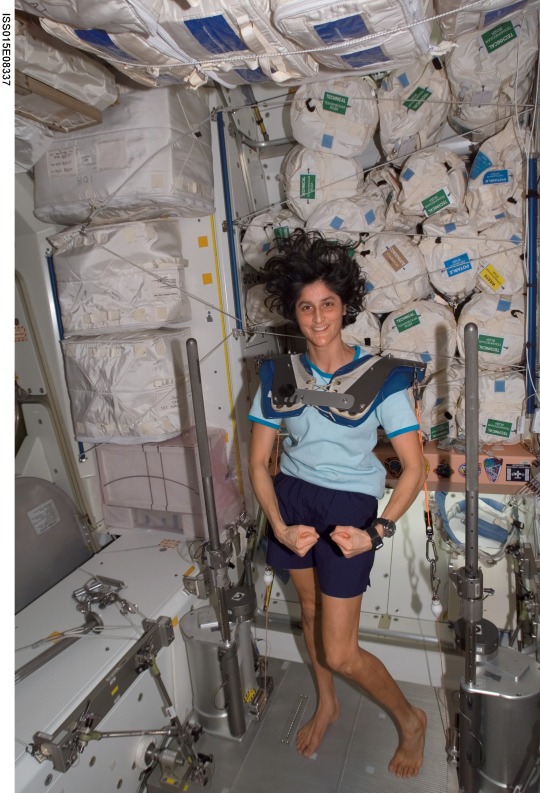
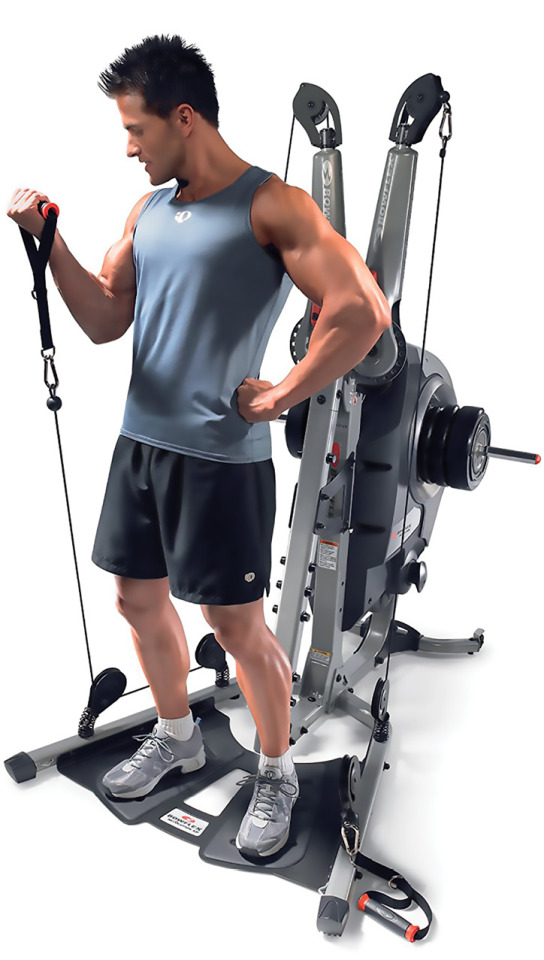
Build Muscle With or Without Gravity
Muscles atrophy quickly in space, so when astronauts began long stays on the International Space Station, they needed some specialized exercise equipment. A resistance mechanism made of a coiled metal spring formed the basis of the first way for astronauts to “lift weights” in space. Soon after, that same design became the heart of compact home gym equipment.
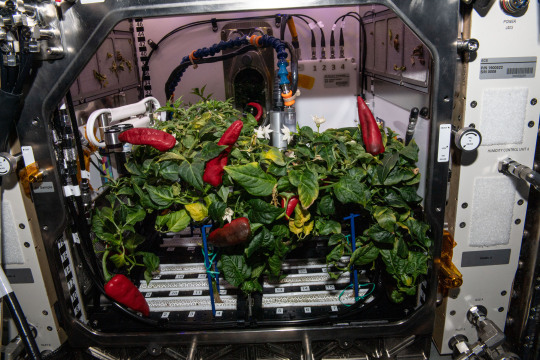
Fresh Greens Every Day of the Year
The need to grow fresh food in space pushed NASA to develop indoor agriculture techniques. Thanks to the agency’s research, private companies are building on NASA’s vertical farm structure, plant-growth “recipes,” and environmental-control data to create indoor farms, resulting in higher crop yields and better-quality produce while conserving water and energy and eliminating the need for pesticides.

Cultivating Hearts and Knees in Space
Gravity is a significant obstacle to bioprinting cells and growing human tissue on Earth because heavier components settle to the bottoms of petri dishes. In the absence of gravity, each cell layer stays in place, which is how it’s possible to grow heart and knee tissue on the space station. The same principle also allows mixing of complex pharmaceuticals on orbit.

Storing Oodles of Energy
NASA chose nickel-hydrogen batteries to power the Hubble Space Telescope and the International Space Station because the technology is safe, reliable in extreme temperatures, and long-lived. NASA’s improvements brought down the cost of the technology, which is now used by large-scale utilities and renewable power plants that need to store energy generated by intermittent sources.
You can read about many more products sourced from the ISS on spinoff.nasa.gov.
Make sure to follow us on Tumblr for your regular dose of space!
2K notes
·
View notes
Text
Screams, Thrills, and You
❦ pairing ; choi seunghyun x reader
❦ warnings ; none! entirely fluff! c:




You had one rule. One personal boundary that, until today, had gone unchallenged: Absolutely no amusement park rides.
But then again, no one said dating Seunghyun would be easy on your comfort zone.
He had begged you. Like, actually dropped to his knees in the middle of your apartment, hands clasped dramatically like he was praying to the gods of thrill-seeking.
“Jagi..” he whined, dragging out the syllable like a lovesick teenager. “Do you want me to die without ever experiencing joy with the love of my life on a rollercoaster?
You stared at him from the couch, arms crossed.
He shuffled closer on his knees, still in full performance mode. “Please, Pleaase..? Just once. Just one date. I’ll do anything!’’
You tried to hold firm. You really did but then he pouted, that ridiculous, unfairly adorable pout and rested his head against your thigh like a wounded puppy and that was it.
You sighed dramatically.
“Fine. One day. One park but I’m not going on anything that looks like it was designed by a mad scientist.’’
He shot up so fast he nearly headbutted you. “I love you.”
“I better not die..” you muttered, already regretting everything.
In fact, you did regret your decision.
Because as soon as you stepped through the gates of the amusement park, hand-in-hand with Seunghyun, reality hit you like a freight train on fire. Your smile twitched, faltered because the rides? They looked insane.
There were loops on top of loops, rides that swung like wrecking balls, and one that literally shot people straight up into the sky before dropping them back down like the world’s worst elevator.
“What the hell is that?!” you gasped, pointing at a ride that looked like it had been built in defiance of gravity and common sense.
Seunghyun turned to look and beamed. “That? That’s Sky Plunge! It spins while it drops while it drops!”
“Why?” you whispered, eyes wide. “Who hurt the person who designed that?”
But Seunghyun didn’t hear you or maybe he did and just chose to ignore it because he was already tugging you forward, eyes darting from one attraction to the next like he couldn’t decide which death machine to get on first.
“Come!” Seunghyun said, practically dragging you by the hand towards the ride, his excitement radiating off of him like a blast of energy.
You stumbled slightly, your legs moving but your heart was still firmly planted in ‘nope’ territory.
“Wait—WAIT!” you gasped, trying to plant your feet, but Seunghyun was relentless, already pulling you toward the massive contraption in front of you.
It looked like a twisted version of a Ferris wheel except this one was vertical, and there were people in it, upside down. You tried to imagine how that would feel.
You couldn’t.
Your stomach twisted into a tight knot. You should have known, but you weren’t prepared for this level of evil.
“What even is this?” you asked weakly, though you were pretty sure you already knew the answer. “This doesn’t look like a ride. It looks like something you’d see on a horror movie set.”
“It’ll turn you upside down and sideways. It’s legendary.” he said with far too much excitement, eyes sparkling with mischief.
“I don’t want to be legendary! I want to stay alive!” You almost pleaded, your hand tightening in his, pulling back slightly.
But Seunghyun was persistent, his grip firm, his face shining with a joy that was honestly hard to deny. You glanced at the towering contraption again and your brain just about shut down.
“How do you enjoy this?” you muttered, half to yourself, but Seunghyun leaned in close, his breath warm against your ear.
“Because I get to be with you” he whispered, his voice low and playful.
Your heart skipped a beat. He always knew how to say just the right thing, didn’t he? You wanted to argue, but the look in his eyes that soft, genuine affection made it so much harder to back out.
“Okay..” you said finally, exhaling like you were signing your own death warrant. “One ride but if I pass out, I’m blaming you.”
Seunghyun smiled and pulled you toward the ride, that cheeky grin lighting up his face. “Deal. I’ve got you and if you pass out, I’ll carry you the whole way home.”
You let out a nervous laugh, but despite the terror knotting in your stomach, you couldn’t help but smile a little as you both got strapped into the ride.
The harness clicked into place, but it didn’t provide nearly enough comfort for your rapidly pounding heart. You swallowed hard, feeling the adrenaline rush through you, not in a fun way, but in a please, make this stop kind of way.
Seunghyun, on the other hand, was practically buzzing with excitement, his eyes wide, a grin stretching across his face. He leaned over, his voice surprisingly calm.
“Jagi you’re gonna love this. It’s all about the thrill”
You forced a smile, but it was shaky at best and then, before you could even process, the ride lurched forward. The ground beneath your feet vanished, and your stomach made a sudden, violent lurch as the ride shot up like a rocket.
You immediately squeezed your eyes shut, one hand gripping down to the safety bar and the other on Seunghyun’s arm like your life depended on it. (It probably did.)
“Oh my God!” you screamed, but the wind was so loud you barely heard your own voice.
You were launched straight up, feeling the blood rush to your head, and before you could even process it, the ride twisted and flipped upside down, sideways, every direction at once.
Seunghyun was beside you, laughing uncontrollably, his voice swallowed by the wind.
“This is amazing!” He shouted, looking over at you, but you were in no condition to look back.
“I’m going to die!” you shouted, unable to stop yourself.
“No, you’re not!” Seunghyun yelled back, eyes sparkling even as you both swung upside down. “This is the best part!”
The ride flipped once more, and you held your breath, your hand clenching tighter around the bar as your body was thrown this way and that. You were so sure you were about to fly off the track, but just as quickly, the ride began to slow down, and the ground began to come back into view.
Once the ride came to a complete stop, you were left blinking, trying to catch your breath, eyes wide as you tried to ground yourself in reality.
You stepped off the ride like a newborn deer. Your legs wobbled beneath you, moving in completely different directions, and your vision spun like the ride was still going.
“I’m never doing that again..” you mumbled, arms flailing slightly as you tried to walk in a straight line and failed miserably.
You stumbled left. Then right. Then kind of… diagonally? Your limbs didn’t feel like they belonged to you anymore.
Seunghyun, of course, was thriving. Practically glowing. His hair was wind-tossed, cheeks flushed, smile wide. He looked like he’d just had the time of his life instead of being nearly flung into the stratosphere.
“Jagi” he said, trying not to laugh as you zig-zagged like a malfunctioning Roomba. “You okay?”
You didn’t answer. Mostly because you were busy spinning in a slow, disoriented circle, trying to figure out where the ground went.
“Oh no” Seunghyun muttered through a chuckle.
You took another shaky step, accidentally veering off to the side and straight into danger of walking into a trash can and that’s when Seunghyun stepped in, hands reaching out quickly to steady you. His arms wrapped around your waist and pulled you back into his chest, grounding you instantly.
You froze, still swaying slightly, your face buried against his hoodie.
“You’re walking like a drunken toddler” he whispered, clearly trying not to laugh. “A cute one, though.”
“I’m dizzy..” you mumbled into his chest, holding onto his hoodie like it was the only thing tethering you to earth.
“I noticed” he said with a smirk, his hands not leaving your waist, thumbs rubbing gentle circles. “You spun yourself more after the ride than the ride itself.”
You sighed dramatically the kind of sigh that carried the weight of love, regret, and a faint prayer to survive the rest of the day.
“We aren’t done though!”
You blinked. “...What?”
Before you could even take another step in the direction of sanity, he had dragged you in his arms towards a rollercoaster that looked like it was designed by someone with a personal vendetta against gravity. The track had at least three full loops, a corkscrew, and one drop that looked illegal.
You stared at it in horror. “That’s not a ride. That’s a cry for help.”
Seunghyun laughed, not even slowing down. “It’s called The Inferno Loop. Sounds fun, right?”
“No! It sounds like a warning!”
“Too late!” he said, kissing the side of your head as if that would somehow erase the dread bubbling in your chest. “You're already in line. Technically.”
You looked around. He was right. Somehow, probably thanks to your state of stunned shock you were already at the entrance, ride signs flashing red and orange like a portal to hell.
“I hate you..” you mumbled again, gripping him tighter.
He looked down at you with that boyish grin. “You say that, but you’re still in my arms. Doesn’t seem very hateful.”
You groaned. He’s lucky he is cute.
He kissed your forehead gently, a quick press of warmth and affection before pulling you with him into the next circle of hell otherwise known as the rollercoaster loading area. The seats looked sleek and deadly. Like futuristic torture devices. You eyed them with deep suspicion as Seunghyun practically skipped toward the front row like he was boarding a first-class flight.
“I can’t believe I’m doing this again..” you muttered as you slowly, reluctantly took your seat beside him.
The staff moved quickly, lowering the thick safety bars over your shoulders. It locked in with a solid click, a sound that sealed your fate.
You stared at the bar, then at Seunghyun, who was already beaming like a kid on Christmas morning.
“This is gonna be insane!” he said, gripping his own harness with excitement.
You didn’t respond. You just blinked at him.
Seunghyun looked over at you, his grin practically stretching ear to ear, the wind already rushing past as the ride climbed higher.
“Ready?”
“Absolutely n—!” you started to scream, but the words barely made it out before the ride launched forward with a jolt that ripped the breath right from your lungs.
Your scream got swallowed by the wind, your whole body yanked back into the seat as the rollercoaster plummeted down the first insane drop. The track curved into a massive loop and your brain short-circuited. Gravity didn’t exist anymore. Neither did your sense of self-preservation.
Meanwhile, Seunghyun?
He was Laughing.
Not just laughing, full-on cackling, hands thrown in the air like this was a casual joyride and not a near-death experience. His eyes flicked to you between the loops, your hair flying in every direction, face frozen in terror.
“You’re doing great!” he shouted over the wind.
You could only scream in response, your voice cracking as the coaster twisted through a sideways corkscrew, your stomach left behind somewhere three loops ago.
By the time the ride finally came to a screeching halt, you felt like you had just been through a tornado, a war, and an exorcism all at once.
Your voice was hoarse from screaming your lungs out, your hands were still clamped tightly around the safety bar like it owed you rent, and your heart was thundering like you’d just run a full marathon.
Twice.
You tried to stand, really, you did but the second you unbuckled the harness and attempted to step out, your legs wobbled beneath you like they were made of overcooked noodles. Then you clutched the side of the ride’s seat, trying to stay upright with your entire body shaking like you’d just been through a natural disaster.
Seunghyun stepped off the ride effortlessly, already bouncing on the balls of his feet, still riding the high of adrenaline. He turned around to help you and paused.
“Oh jagi…” he said, eyes wide with poorly hidden amusement as he saw you swaying in place, arms stretched like a baby deer trying to walk on an ice rink.
“I don’t think I can walk” you mumbled, trying to shift your weight and immediately regretting it.
Without another word, Seunghyun stepped forward, slid his arms under your legs and behind your back, and just lifted you. You gasped, flailing slightly as he cradled you like it was the most casual thing in the world.
“Shhh” he said dramatically.
“You’ve been through enough. Let me carry my brave little warrior princess.”
You buried your face in his hoodie in sheer exhaustion and embarrassment.
“..Stop calling me that”
“You faced death for me. Screamed like a banshee. Almost passed out.” he grinned, starting to walk away from the ride platform with you in his arms.
People were definitely looking, but Seunghyun didn’t care. In fact, he looked proud of the whole situation.
“Don’t worry” he added, pressing a kiss to the top of your head. “You’ll recover. I’ll feed you snacks, get you a plushie, and tell you how hot you looked screaming.”
“Seunghyun.”
“Yes, jagi?”
“…Put me down.”
“Absolutely not. You’re mine now. Carrying you forever.”
159 notes
·
View notes
Text
Tesla’s Wardenclyffe Tower: Built on Sound Math, Undone by Cost and Misunderstanding

Let’s set the record straight—Nikola Tesla’s Wardenclyffe Tower was a high-voltage experimental transmission system grounded in quarter-wave resonance and electrostatic conduction—not Hertzian radiation. And the math behind it? It was solid—just often misunderstood by people applying the wrong physics.
In May 1901, Tesla calculated that to set the Earth into electrical resonance, he needed a quarter-wavelength system with a total conductor length of about 225,000 cm, or 738 feet.
So Tesla’s tower design had to evolve during construction. In a letter dated September 13, 1901, to architect Stanford White, Tesla wrote: “We cannot build that tower as outlined.” He scaled the visible height down to 200 feet. The final structure—based on photographic evidence and Tesla’s own testimony—stood at approximately 187 feet above ground. To meet the required electrical length, Tesla engineered a system that combined spiral coil geometry, an elevated terminal, a 120-foot vertical shaft extending underground, and radial pipes buried outward for approximately 300 feet. This subterranean network, together with the 187-foot tower and carefully tuned inductance, formed a continuous resonant conductor that matched Tesla’s target of 738 feet. He described this strategy in his 1897 patent (No. 593,138) and expanded on it in his 1900 and 1914 patents, showing how to simulate a longer conductor using high-frequency, resonant components. Even with a reduced visible height, Tesla’s system achieved quarter-wave resonance by completing the rest underground—proving that the tower’s electrical length, not its physical height, was what really mattered.
Tesla calculated his voltages to be around 10 million statvolts (roughly 3.3 billion volts in modern SI), so he had to consider corona discharge and dielectric breakdown. That’s why the terminal was designed with large, smooth spherical surfaces—to minimize electric surface density and reduce energy loss. This was no afterthought; it’s a core feature of his 1914 patent and clearly illustrated in his design sketches.
Now, about that ±16 volt swing across the Earth—what was Tesla talking about?
He modeled the Earth as a conductive sphere with a known electrostatic capacity. Using the relation:
ε × P = C × p
Where:
ε is the terminal’s capacitance (estimated at 1,000 cm)
P is the applied voltage (10⁷ statvolts)
C is the Earth’s capacitance, which Tesla estimated at 5.724 × 10⁸ cm (based on the Earth’s size)
p is the resulting voltage swing across the Earth
Plugging in the numbers gives p ≈ 17.5 volts, which Tesla rounded to ±16 volts. That’s a theoretical 32-volt peak-to-peak swing globally—not a trivial claim, but one rooted in his framework.
Modern recalculations, based on updated geophysical models, suggest a smaller swing—closer to ±7 volts—using a revised Earth capacitance of about 7.1 × 10⁸ cm. But that’s not a knock on Tesla’s math. His original ±16V estimate was fully consistent with the cgs system and the best data available in 1901, where the Earth was treated as a uniformly conductive sphere.
The difference between 7 and 16 volts isn’t about wrong numbers—it’s about evolving assumptions. Tesla wrote the equation. Others just adjusted the inputs. His premise—that the Earth could be set into controlled electrical resonance—still stands. Even if the voltage swing changes. The vision didn’t.
Wouldn't that ±16V swing affect nature or people? Not directly. It wasn’t a shock or discharge—it was a global oscillation in Earth’s electric potential, spread evenly across vast distances. The voltage gradient would be tiny at any given point—far less than what’s generated by everyday static electricity. Unless something was specifically tuned to resonate with Tesla’s system, the swing had no noticeable effect on people, animals, or the environment. It was a theoretical signature of resonance, not a hazard. While some early experiments in Colorado Springs did produce disruptive effects—like sparks from metal objects or spooked horses—those involved untuned, high-voltage discharges during Tesla’s exploratory phase. Wardenclyffe, by contrast, was a refined and carefully grounded system, engineered specifically to minimize leakage, discharge, and unintended effects.
And Tesla wasn’t trying to blast raw power through the ground. He described the system as one that would “ring the Earth like a bell,” using sharp, high-voltage impulses at a resonant frequency to create standing waves. As he put it:
“The secondary circuit increases the amplitude only... the actual power is only that supplied by the primary.” —Tesla, Oct. 15, 1901
Receivers, tuned to the same frequency, could tap into the Earth’s oscillating potential—not by intercepting radiated energy, but by coupling to the Earth’s own motion. That ±16V swing wasn’t a bug—it was the signature of resonance. Tesla’s transmitter generated it by pumping high-frequency, high-voltage impulses into the Earth, causing the surface potential to oscillate globally. That swing wasn’t the energy itself—it acted like a resonant “carrier.” Once the Earth was ringing at the right frequency, Tesla could send sharp impulses through it almost instantly, and tuned receivers could extract energy.
So—was it feasible?
According to Tesla’s own patents and 1916 legal testimony, yes. He accounted for insulation, voltage gradients, tuning, and corona losses. His design didn’t rely on brute force, but on resonant rise and impulse excitation. Tesla even addressed concerns over losses in the Earth—his system treated the planet not as a passive resistor but as an active component of the circuit, capable of sustaining standing waves.
Wardenclyffe wasn’t a failure of science. It was a casualty of cost, politics, and misunderstanding. Tesla’s system wasn’t just about wireless power—it was about turning the entire planet into a resonant electrical system. His use of electrostatics, high-frequency resonance, and spherical terminals was decades ahead of its time—and still worth studying today.
“The present is theirs; the future, for which I really worked, is mine.” —Nikola Tesla
#nikola tesla#science#history#quotes#electricity#wireless#technology#mathematics#math#engineering#power#Wardenclyffe#ahead of his time#ahead of our time
82 notes
·
View notes
Text

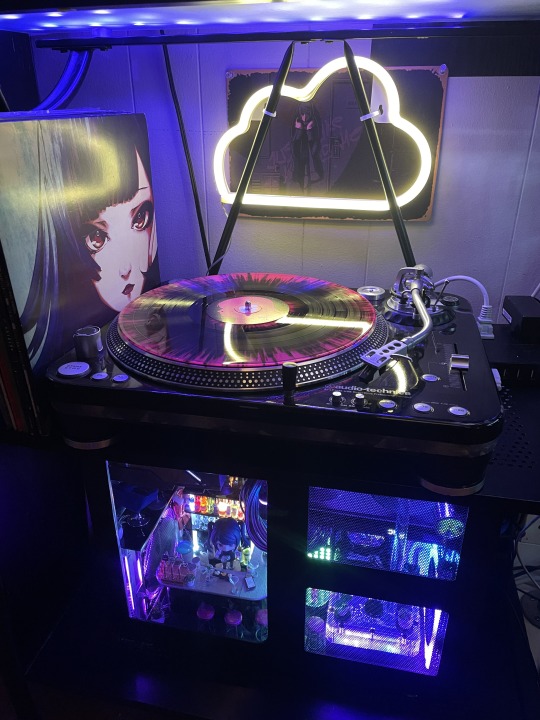


I built a miniature Va11 Hall-A Bar inside of my PC!!
Va11 Hall-A PC Parts & Build list
PC:
CPU : Intel I9 14900k
GPU: Intel Arc A770 16gb
Ram: Corsair Dominator 64gb 5600
Mobo: Maxsun Terminator Z790 D5 wifi
Hard drives M.2: Samsung 990 pro 2tb, Samsung 970 evo plus 1tb, CT 1tb, Adata 500gb
PSU: ROG Thor 850 P2
Cables: Cablemod.com custom shortened and sleeved
Water loop distro : EKWB FLT 120 reservoir + D5 pump
Water loop cpu block: ThermalTake Pacific Mx2 Ultra
Water loop radiators: Alphacool HPE 20 x 2
Water loop hardware: 15 Alphacool, 3 EKWB, 2 Alphacool soft, 2 granzon
Water loop tubes: EKWB Acrylic tube 14mm, Alphacool 13/10 soft
Air Cooling : ThermalTake Toughfan 120mm x 3 + Controller
Air Cooling : Noctua 40mm pwm server fan x 2 (non visible)
Additional RGB Control : Coolermaster controller
Case:
Lian Li PC V600, left side mount, released in 2006, I acquired it in 2015 from PC Recycle in sodo Seattle.
I had to track down a new foot, one had been missing since I acquired the case (ebay)
Mods:These are the case mods I did personally
Cut a hole for the cpu mounts in the Motherboard mount plate as this case was designed for older hardware
Cut two 120mm blowholes and added aluminum covers (Dremel)
Cut Front and rear windows into side panels (Dremel Max)
Moved PSU from vertical placement in the lower right side of the case in front of the CPU to horizontal placement in the top left in old drive bays.
The PSU bracket had to be cut to show the OLED on the side.
Modded the side panel rail slide to accommodate the PSU, I used the original aluminum stand the psu was on, cut in half and epoxied with JB weld.
Changed and moved Power/ Reset switch to the back of the case, shortened and spliced the cable
I cut and bent my own 14mm acrylic tubes (hobby miter, heat gun).
Cut and made two way mirror for the front panel
Plastic "truss" is both functional and aesthetic. It came from a Gunpla accessory kit and has two cables passing through it and it acts as the GPU support. I could only get red and had to paint it.
Notice that some logos are missing/ covered, I dislike having a case as an advertisement. The Rog eye on the PSU is mostly covered but iykyk, most of the word "Intel" on the ARC GPU, Two of the Thermaltake logos on the fan edges, the Paint on the Thermaltake Mx2 Ultra and Maxsun terminator heatsink. (I will eventually cover the visible SSD with a heat sink, cover the fan info on the rear and work a cover for the word "dominator"). the one logo explicitly unchanged is the LianLi case badge, if I think of a perfect replacement, maybe then.
Mod I did not do:
I did NOT shorten and sleeve my own cables, I used cable-mod.com. I am not confident in my ability to do this.
BAR:
"Bar Tiny" Re-ment sets from Japan, 17 sets involved.
I customized the color of the bar and chairs and shortened one table for the mezzanine. The whole bar, minus barback- is on a removable 7 inch piece of black acrylic for cleaning.
Jill Stingray Nendoroid
Jils Cat, it sleeps on the GPU
Jill Stool: Jill is glued to a cute doll stool to see over the bar
Jill Accessories non-Nendoroid: cellphone, purse, coat (ebay)
Dorothy Haze Nendoroid
will be added on release.
Bar Back:I made this myself
Black acrylic sheet, and frosted acrylic rods.
Doll Light power kit: 8 Led lights, 4 incandescent lights
USB Doll light power strip
Other Bar Accessories:
Overhead Hanging farmhouse light
trash, mop, broom, pan, mop bucket,
2 blue fuzzy chairs
Miniature plants
Miniature Microphone
Mini bottle Dom Perignon, an xmas gift from my friend nemo, it's
on the top shelf
Problems and changes:
1. ARGB, pretty pretty pain in the ass. 4 pieces of software........
2. The water loop was changed extensively as hardware came in and space limitations were discovered. The biggest change is that I originally planned to have one radiator on the front of the case, the tubes running over Jills head and to light the tubes as lighting for the bar, to do this the fan would have been in the case proper pushing the whole bar to far into the mobo, it didn't work, so the loop was moved to the top of the case and caused me to have one complex bent tube
Second, I had planned the loop to use one sideport on the distro, but space limitation moved both ports to the top causing the complex fittings setup in that corner.
3. The MOBO, sigh. This has been clearly the most challenging choice I made in this build, I really wanted it to work perfectly too, but I rolled those dice because: Aesthetic+function, the board I wanted (https://en.colorful.cn/en/home/product?mid=84&id=400d19bc-5655-49e1-b391-df00b60935ef) was to great a risk for the cost. This was a silver medal.
I generally dislike the design options I had in the Z790 series of the big board makers (I HATE big logos), especially the full ATX, there was one M that interested me, I should have picked it . This board has potential, but the BIOS is underdeveloped and compatibility has been problematic, I had to do a tricky outdated style BIOS update right from the box, and have had to reset the cmos a couple times. It skips BIOS on general boot and though stable, it will have to be addressed eventually, it doesn't have a proper sleep because of some issue between uefi & legacy. It may end up replaced, which will require a full build teardown.
the Turbo fan built into the board doesn't seem to function
Alos, the two argb connections on the mobo dont work, or I can't get them to recognize anything, necessitating the Coolermaster controller for the PSU and Distro. it is shoved behind the distro along with a Noctua 40mm
#va 11 hall a#va11ha11a#computer#pc#pcgamimg#sukeban#sukeban games#watercolor#watercooled#custompc#pc mods#jill stingray#fanart#cyberpunk art#futuristic#cyberpunk
275 notes
·
View notes
Text
Some Greek Art Vocabulary
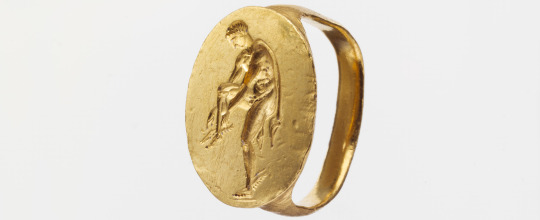
for your next poem/story
Alabastron - A small vase for olive oil, often scented.
Amphora - A two-handled terracotta storage jar used by the ancient Greeks to hold or measure oil, wine, or milk.
Calyx - The external, cup-shaped, leafy part of a flower.
Calyx-krater - A krater with handles in the cupped shape of a calyx.
Epitaph - A funerary inscription.
Krater - A large pottery vessel with a mouth broad enough to allow a jug to be dipped into it; used for mixing wine with water in ancient Greece.
Negative space - The area around the decorative subject on a work of art; the external or outside area that defines the subject.
Palmette - An ornament of radiating petals on a calyx-shaped or budlike base; along with the sphinx, palmettes often top Greek grave markers.
Positive space - The area on a work of art where the subject is represented; the internal area.
Registers - In art, horizontal bands of images that often appear in vertical series on walls, vases, and so forth.
Relief - A sculpted surface in which the decorations stand out, in varying degrees of depth; reliefs are meant to be viewed frontally, not in the round.
Sphinx - A fabled creature that is half human and half animal; in Greek art and legend the sphinx has the head and torso of a woman.
Stele - An upright slab of stone usually inscribed and sometimes decorated with designs or figures that are painted or carved in relief; used by the Greeks as grave markers or for displaying public notices.
Symmetry - The duplication of an image on either side of a real or imaginary central axis.
Terracotta - Clay that has been fired at a relatively low temperature, brownish-red or buff in color.
Source ⚜ More: Word Lists
#greek art#terminology#word list#writing inspiration#writeblr#dark academia#writing reference#spilled ink#creative writing#light academia#literature#writers on tumblr#poets on tumblr#writing prompt#poetry#art vocab#writing resources
134 notes
·
View notes
Text

NASA Shares New Views of our Galactic Neighbor, Andromeda
The Andromeda galaxy, also known as Messier 31 (M31), is the closest spiral galaxy to the Milky Way at a distance of about 2.5 million light-years. Astronomers use Andromeda to understand the structure and evolution of our own spiral, which is much harder to do since Earth is embedded inside the Milky Way.
The galaxy M31 has played an important role in many aspects of astrophysics, but particularly in the discovery of dark matter. In the 1960s, astronomer Vera Rubin and her colleagues studied M31 and determined that there was some unseen matter in the galaxy that was affecting how the galaxy and its spiral arms rotated. This unknown material was named “dark matter.” Its nature remains one of the biggest open questions in astrophysics today, one which NASA’s upcoming Nancy Grace Roman Space Telescope is designed to help answer.
This new composite image contains data of M31 taken by some of the world’s most powerful telescopes in different kinds of light. This image includes X-rays from NASA’s Chandra X-ray Observatory and ESA’s (European Space Agency’s) XMM-Newton (represented in red, green, and blue); ultraviolet data from NASA’s retired GALEX (blue); optical data from astrophotographers using ground based telescopes (Jakob Sahner and Tarun Kottary); infrared data from NASA’s retired Spitzer Space Telescope, the Infrared Astronomy Satellite, COBE, Planck, and Herschel (red, orange, and purple); and radio data from the Westerbork Synthesis Radio Telescope (red-orange).
Each type of light reveals new information about this close galactic relative to the Milky Way. For example, Chandra’s X-rays reveal the high-energy radiation around the supermassive black hole at the center of M31 as well as many other smaller compact and dense objects strewn across the galaxy. A recent paper about Chandra observations of M31 discusses the amount of X-rays produced by the supermassive black hole in the center of the galaxy over the last 15 years. One flare was observed in 2013, which appears to represent an amplification of the typical X-rays seen from the black hole.
These multi-wavelength datasets are also being released as a sonification, which includes the same wavelengths of data in the new composite. In the sonification, the layer from each telescope has been separated out and rotated so that they stack on top of each other horizontally, beginning with X-rays at the top and then moving through ultraviolet, optical, infrared, and radio at the bottom. As the scan moves from left to right in the sonification, each type of light is mapped to a different range of notes, from lower-energy radio waves up through the high energy of X-rays. Meanwhile, the brightness of each source controls volume, and the vertical location dictates the pitch.
This new image of M31 is released in tribute to the groundbreaking legacy of Dr. Vera Rubin, whose observations transformed our understanding of the universe. Rubin’s meticulous measurements of Andromeda’s rotation curve provided some of the earliest and most convincing evidence that galaxies are embedded in massive halos of invisible material — what we now call dark matter. Her work challenged long-held assumptions and catalyzed a new era of research into the composition and dynamics of the cosmos. In recognition of her profound scientific contributions, the United States Mint has recently released a quarter in 2025 featuring Rubin as part of its American Women Quarters Program — making her the first astronomer honored in the series.
NASA's Marshall Space Flight Center in Huntsville, Alabama, manages the Chandra program. The Smithsonian Astrophysical Observatory's Chandra X-ray Center controls science operations from Cambridge, Massachusetts, and flight operations from Burlington, Massachusetts.
22 notes
·
View notes
Text
hauntingly relaxing basslines to grow/disappearify pumpkins to
(page 818-825)

Jade irradiates a tasty dinner for Bec, leaving it full of ‘nice depleted steak isotopes’ (p.819). I was wondering about the science behind this, and learned that while radioactive decay naturally gives off heat, it’s probably not enough to cook a steak. Radioisotope thermal generators convert the heat of radiation into electricity, and there’s a lot of theory about radioisotopic batteries that could operate similarly to solar cells, but their efficiency is below 2% in laboratory tests.
This got me thinking about Skaia as a perfect conserver of energy – on page 193, Rose expends six units of build grist to construct three Perfectly Generic Objects. On p.261, she deletes them and regains six build grist. Next page, she uses the recovered grist to build a platform extending from John’s house, and finally on p.485 turns that platform back into six grist to build more stairs. In the real world, there is always a loss of energy and raw materials when changing something’s form, and many games model this (for example, an in game item costing 100 gold but only sold back for 50) to discourage players changing their minds. But Sburb explicitly allows for this experimentation, and a similar principle could explain why Jade’s uranium powered devices are so efficient.
Speaking of Jade’s technology, we see her ECLECTIC BASS, which is a kind of triple keytar. It definitely does not need to exist but it is so cool that it does. Jade (via the narrator) is frustratingly vague again with ‘obviously it's too complicated to play it in person like this’, refusing to clarify what ‘in person’ means, but I’d guess it’s a remote controlled hand or several that can play bass remotely without the limitations of human fingers. Possibly controlled through her other invention: the computer.
Instead of a regular desktop, Jade’s LUNCHTOP works through beams of light emitting from small floating polyhedrons, positioning her literally within the digital space. Amidst floating clouds, extra pixels and jpeg debris, and spinning chromosomes of light is a cool dragon as a wallpaper, icons for Pesterchum, Echidna (probably a browser) and Fresh Jamz!, which has an icon of a musical note over a jar of fruit jam. Is Jade a composer too? Did she write her own hauntingly relaxing bassline that caused the plants to grow? Is this a hobby she and Dave have in common?
Jade’s hauntingly relaxing bassline (p.822) is a great companion piece to WV: Ascend, showing Jade’s island in its current state as opposed to in extended timelapse. The house, with its orbs atop spires, is clearly modeled on a now broken part of the frog statue, and was designed to fit in with the existing architecture and shape of the island (it forms a peak to the small second mountain). The house was built for aesthetics, not function, and is primarily vertical especially towards the top. No wonder Jade ‘almost never use[s] the stairs’.
Putting the timeline together, we know that Jade is about to message John at 16:34 his time (p.110), but they don’t actually talk until 17:25 (p.169), almost an hour later, at which point there’s an explosion outside Jade’s house. In page 822’s animation, an aeroplane flies low over Jade’s island and drops off a delivery (a blue package – something from John, perhaps?). This must be an uncommonly loud sound in a remote area. Depending on how this flash syncs with the timeline, this may or may not be the ‘explosion’. Either way, Jade will be on the computer during the explosion, and as her likely homemade computer involves complete immersion in the digital surroundings, I can believe that she would interpret a noise from her computer as something that’s happening outside her house.
We’ve explored Jade’s room, interests, musical talents, fetch modus, and now computer. In all of these she’s been set up differently to her friends. We have yet to explore the rest of her house and its surroundings (featuring, presumably, strange themed decor, a large humanoid doll and a piece of visual art Jade has created) and to meet Jade’s grandfather, witnessing her attempts to evade and eventually strife with him.
> Jade: Open Echidna and watch your favorite Squiddles episode.
25 notes
·
View notes
Text
THE STARLINK INCIDENT IS NOT WHAT WE THOUGHT:
It never made sense. On Feb. 3rd, 2022, SpaceX launched a batch of 49 Starlinks to low-Earth orbit--something they had done many times before. This time was different, though. Almost immediately, dozens of the new satellites began to fall out of the sky.

Above: A Starlink satellite falls from the sky over Puerto Rico on Feb. 7, 2022. [video]
At the time, SpaceX offered this explanation: "Unfortunately, the satellites deployed on Thursday (Feb. 3rd) were significantly impacted by a geomagnetic storm on Friday, (Feb. 4th)." A more accurate statement might have read "...impacted by a very minor geomagnetic storm." The satellites flew into a storm that barely registered on NOAA scales: It was a G1, the weakest possible, unlikely to cause a mass decay of satellites. Something about "The Starlink Incident" was not adding up. Space scientists Scott McIntosh and Robert Leamon of Lynker Space, Inc., have a new and different idea: "The Terminator did it," says McIntosh. Not to be confused with the killer robot, McIntosh's Terminator is an event on the sun that helps explain the mysterious progression of solar cycles. Four centuries after Galileo discovered sunspots, researchers still cannot accurately predict the timing and strength of the sun's 11-year solar cycle. Even "11 years" isn't real; observed cycles vary from less than 9 years to more than 14 years long.

Above: Oppositely charged bands of magnetism march toward the sun's equator where they "terminate" one another, kickstarting the next solar cycle. [more]
McIntosh and Leamon realized that forecasters had been overlooking something. There is a moment that happens every 11 years or so when opposing magnetic fields from the sun's previous and upcoming solar cycles collide and cancel (see the animation, above). They called this moment, which signals the death of the old cycle, "The Termination Event."
After a Termination Event, the sun roars to life–"like a hot stove where someone suddenly turns the burner on," McIntosh likes to say. Solar ultraviolet radiation abruptly jumps to a higher level, heating the upper atmosphere and dramatically increasing aerodynamic drag on satellites.
This plot supports what McIntosh and Leamon are saying:

The histogram shows the number of objects falling out of Earth orbit each year since 1975. Vertical dashed lines mark Termination Events. There's an uptick in satellite decay around the time of every Terminator, none bigger than 2022.
As SpaceX was assembling the doomed Starlinks of Group 4-7 in early 2022, they had no idea that the Terminator Event had, in fact, just happened. Unwittingly, they launched the satellites into a radically altered near-space environment. "Some of our satellite partners said it was just pea soup up there," says Leamon.
SpaceX wasn't the only company hit hard. Capella Space also struggled in 2022 to keep its constellation of Synthetic Aperture Radar (SAR) satellites in orbit.
“The atmospheric density in low Earth orbit was 2 to 3 times more than expected,” wrote Capella Space's Scott Shambaugh in a paper entitled Doing Battle With the Sun. “This increase in drag threatened to prematurely de-orbit some of our spacecraft." Indeed, many did deorbit earlier than their 3-year design lifetimes.
The Terminator did it? It makes more sense than a minor storm.
8 notes
·
View notes
Text
Warmth and Style: Your Ultimate Reina Heating Buying Guide
Welcome to the radiant world of Reina heating solutions, curated exclusively for you by Cheshire Tile and Bathroom, the UK's online bathroom shop. Dive into our comprehensive Reina Heating Buying Guide, where we unravel the secrets to transforming your space into a warm and stylish haven with designer radiators, heated towel rails, and more.

1. Reina Designer Radiators: A Symphony of Form and Function
Reina Column Radiators: Embrace classic elegance with these timeless and efficient column radiators.
Horizontal Designer Radiators: Infuse your space with contemporary charm and warmth with horizontal designer radiators.
Vertical Designer Radiators: Maximize space and make a statement with the sleek and space-efficient vertical designer radiators.
Reina Ancona Radiators: Discover the epitome of modern design and functionality with the Reina Ancona series.
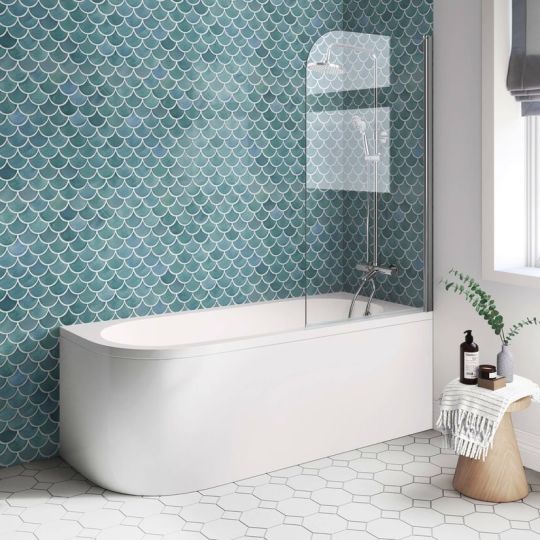
2. Reina Heated Towel Rails and Warmers: Luxury Redefined
Designer Heated Towel Rails: Combine functionality and style with these elegant and space-saving towel heating solutions.
Electric Radiators & Rails: Experience flexibility and convenience with electric radiators and rails, perfect for any room.
Reina Towel Rails Sale: Enjoy luxury at an affordable price with exclusive offers on Reina towel rails.
3. Reina Heating Accessories: Elevate Your Heating Experience
Radiator Valves: Choose from a variety of radiator valves to complement your Reina heating system.

Traditional Radiators: Add a touch of nostalgia to your space with Reina's collection of traditional radiators.
Aluminium Radiators: Embrace modernity and energy efficiency with the sleek and lightweight design of aluminium radiators.
Shopping with Confidence at Cheshire Tile and Bathroom
As the leading online bathroom shop in the UK, Cheshire Tile and Bathroom is committed to providing you with an unparalleled shopping experience. Explore our extensive Reina heating collection, and with just a click, you can elevate your space with warmth, style, and sophistication. Don't miss out on exclusive offers during the Reina Vertical Radiators Sale. Transform your home into a cozy retreat – shop Reina at Cheshire Tile and Bathroom, where warmth meets elegance. Call us at 0161 485 7073 or Email us at [email protected]
#UK's online bathroom shop#Cheshire tile and bathroom#Reina designer radiators#Reina heated towel rails#Reina heated towel warmers#Reina column radiators#designer heated towel rails#Electric radiators & rails#heating accessories#horizontal designer radiators#radiator valves#traditional radiators#vertical designer radiators#Reina Vertical Radiators Sale#Reina Ancona Radiators#Aluminium Radiators#Modern Radiators#Reina Towel Rails
0 notes
Text
Discover Bathroom4Less's exclusive range of durable vertical designer radiators, built to last and available in a variety of premium finishes. Choose from sleek black, modern white, and sophisticated anthracite options to match any décor. Our vertical electric radiators offer efficient heating with a stylish edge, while our double vertical and column radiators provide powerful warmth for larger spaces. Designed with quality and performance in mind, Bathroom4Less radiators are perfect for any home, offering style and functionality in one.
#Bathroom4less#radiator#electric radiators#vertical radiators#vertical radiator#vertical electric radiators#black vertical radiator#white vertical radiators#anthracite vertical radiator#double vertical radiator#electric vertical radiators#radiator vertical#vertical designer radiators#vertical electric radiator#column radiators vertical#Radiator
0 notes
Text
Practical and Unique Post-Apocalyptic Shelter Design Ideas for Fantasy Writers

You've decided to destroy civilization in your fantasy novel? Sucks to be your character. Now let's make their situation a little better or worse but at the least unique, practical, and resourceful.
Use What's Left Behind: The end of the world doesn't mean the end of human ingenuity. Think of what materials survived your apocalypse and how to reuse them. Crumbling skyscrapers can be reinforced and turned into vertical communities, or broken-down cars can be transformed into steel-tough barricades. Old school buses or train cars?
The Importance of Defense: Your characters aren't the only ones who have survived. Threats lurk everywhere. Design shelters that have built-in defenses. Your skyscraper community may have drawbridges between floors, or your train car home can be easily detached and sped away in case of danger. Remember the secret exits!
Incorporate the Natural Environment: Trees, caves, and mountains offer robust options for post-apocalyptic shelter. A hollowed-out hillside, for example, provides cover from harsh weather and is easily defensible. Make sure the natural element isn't in a highly radioactive environment. The trunk of a massive, ancient tree could house an entire family. Underwater habitats in the middle of a lake or an ocean?
Reinvention of Basic Utilities: How will your characters access fresh water, dispose of waste, or maintain a consistent food supply? A river or rainwater could be cleverly directed and filtered, or a salvaged solar panel can provide electricity for a makeshift greenhouse. Composting toilets aren't glamorous, but they get the job done. I may be too used to modern comforts because that last one is a big ew.
Adapting to Your Apocalypse: If you have a nuclear winter scenario, consider shelters with radiation shielding and heat sources. Alien invasion? Consider camouflage or underground dwellings. Zombie outbreak? Elevate your shelters; zombies can't climb! Well, I hope your zombies can't climb. If they do, you may be a sick unhinged person. Keep it up. Makes for better fiction.
Remember, It's Home: This is where your characters will spend a lot of time. Personalize these spaces to reflect the inhabitants. Maybe one character is obsessed with salvaging books, so there's a small library corner. Perhaps another is a mechanic, and there's a well-stocked tool area. Little details will make your post-apocalyptic shelters feel more like home. Or not. A lack of home-related details could add to a sense of impermanence. Having to pull up and run a lot, maybe leaving things behind in your haste, adds to the suspense.
No long ending paragraph today. Have fun writing!
-Indigo
#FantasyWriting#WorldBuilding#PostApocalyptic#WritingTips#ShelterDesign#CreativeWriting#FantasyAuthors#WritingInspiration#SurvivalScenarios#ApocalypseArchitecture#WritingCommunity#NovelWriting#CharacterDevelopment#FantasyWorlds#DystopianFiction#Storytelling#ApocalypticSurvival#SettingCreation#WritingPrompts#FantasyGenre#ImaginativeWriting#ScifiWriting#PostApocalypticLiving#WritersLife#StoryCrafting#FictionWriting#NarrativeDesign#WritingAdvice#WritersOnTumblr#LiteraryWorlds
181 notes
·
View notes
Text
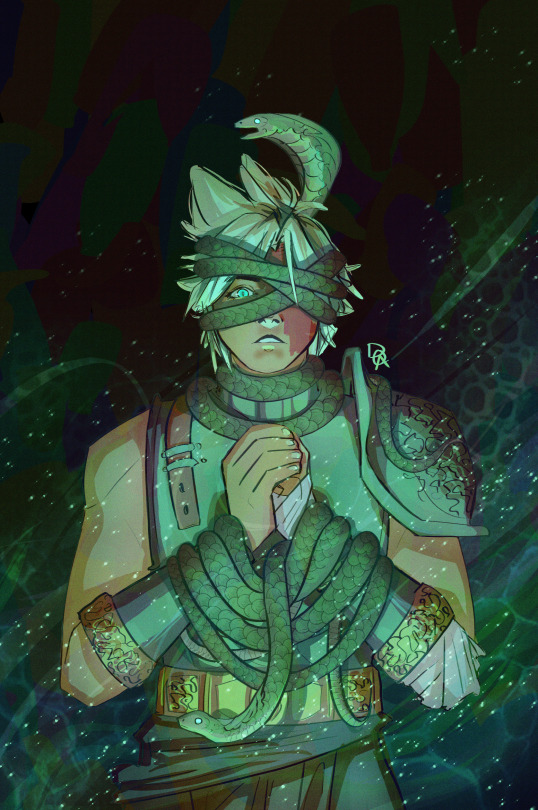
Pray ardently, my empty puppet; Among brothers you roam, the black sheep.
• • •
lore, variants and ID under the cut !!
what is the significance of the snakes? no idea. i probably drew them badly, too.
but hinduism claims snakes represent life, death and rebirth; northeastern indian cultures consider snakes and serpentine dragons to be symbols of good luck and fortune, and protectors of water sources; and funnily enough, the sanskrit word "naga" has often been used to refer to snakes, serpentine demigods, and, very very rarely, clouds.
and maybe this is a long-winded way of saying desi!Cloud finds himself leaning towards the serpents in his journey for self-forgiveness and recovery, much like how AC Cloud is often paired with Fenrir and the wolf motif.
if i were to really follow through with desi!Cloud and the snake motif, then it almost makes sense to have desi!Sephiroth be attributed to birds, maybe specifically the garuda, not because of the wings but because most indian cultures consider snakes and birds to be enemies. Nagas and snakes were thought to reside within the underworld (and the original Nibelheim is the land of the dead); and birds, specifically eagles and the garuda, have been associated with the gods, which ties into Sephiroth pursuing godhood for most of the game.
And that little tidbit of snakes being protectors of water sources? hmm. I can see Cloud regularly visiting Aerith, him as the guardian of her grave and her gift to the world.
so. yeah, I have no idea what the purpose of snakes are in this picture. Cloud bound by fate? holding himself back from forgiveness, from growth? hmm. much to think about it
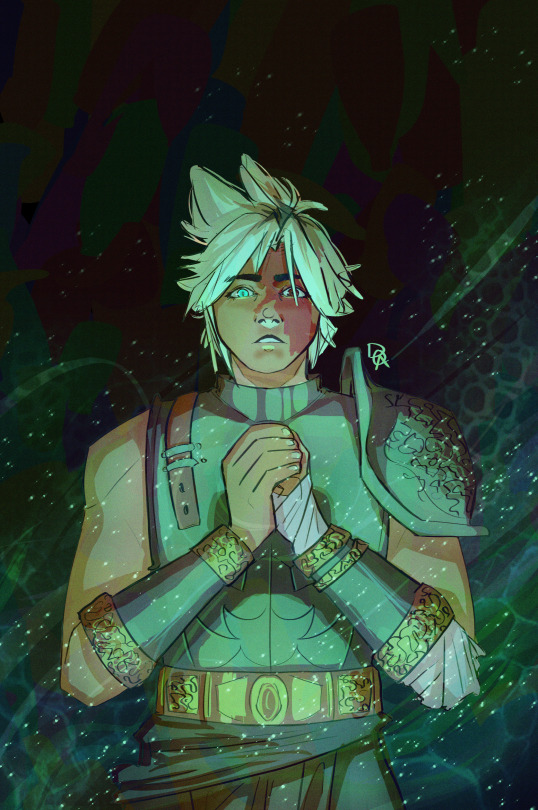
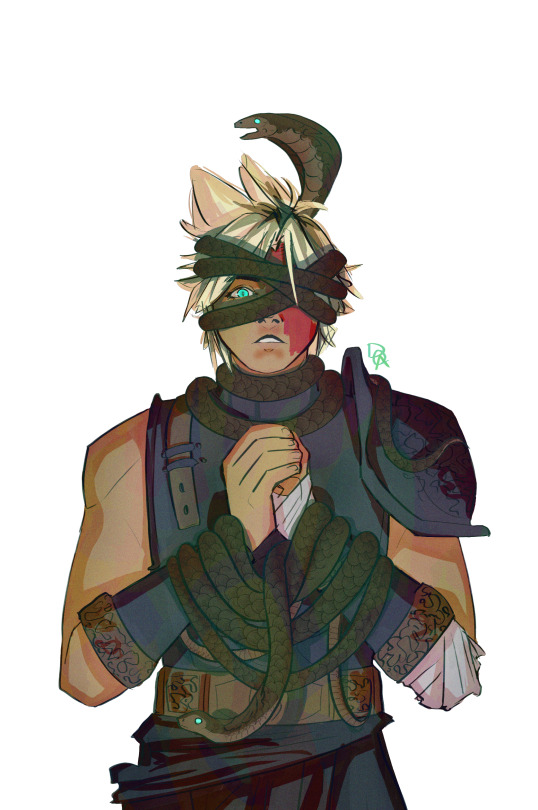
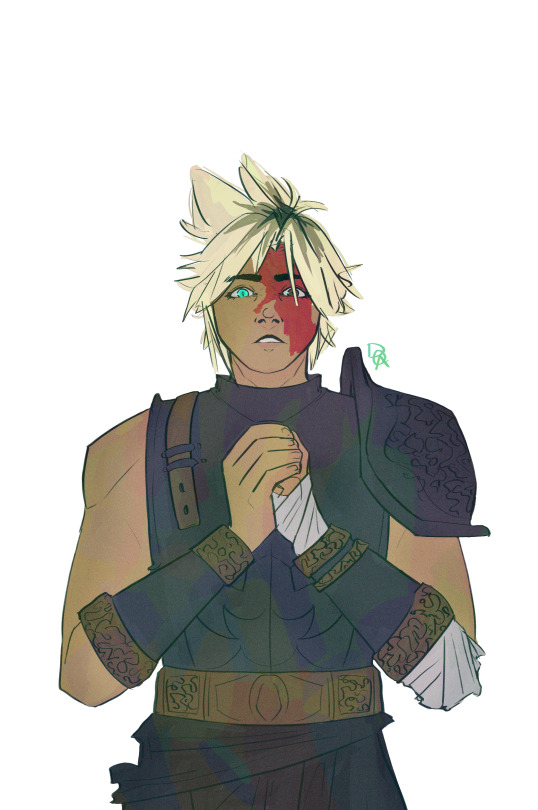
START ID: A piece focused on Cloud Strife from Final Fantasy 7, who stands in the centre of the image. A black backdrop, with green wisps and tessellating textures over it. Cloud stands in front, hands clasps in prayer, similar to Aerith Gainsborough's iconic prayer pose; he is staring at the viewers with an absent gaze. He is awash with green light, his right eye is glowing an eerie shade of green and has a vertical slit pupil, and the left side of his face is covered in blood. His SOLDIER uniform has south Asian influences, notably in the design of the pauldrons, arm guards and belt. Wrapping around his head and neck is a snake, which rears its head over his hair and covers Cloud's left eye with its coils. Around his clasped hands is another snake, looping around his wrists like rope. Around Cloud in the foreground are small, tiny green sparks, floating aimlessly to the side. The overall piece radiates a foreboding, desolate atmosphere. /END ID.
#tw blood#cw blood#been a while since i actually Made art that had some considerable thought going into the design lol. it's kinda fun actually#i guess ff7 symbolism rubbed off onto me. what do ya know#ignore the hands !!! i tried !!!!! and failed !!!!!!!!!!!!#cloud strife#ffvii#ff7#ff7 fanart#final fantasy 7#final fandesi 7#artoftheagni#desi#desi art
43 notes
·
View notes
Text

Thermal photonics advances enable efficient subambient daytime radiative cooling for vertical surfaces
Radiative heat transfer is one of the most critical energy transfer mechanisms in nature. However, traditional blackbody radiation, due to its inherent characteristics, such as its non-directional, incoherent, broad-spectrum, and unpolarized nature, results in energy exchange between the radiating body and all surrounding objects, significantly limiting heat transfer efficiency and thermal flow control. These limitations hinder its practical application. A recent study published in Science utilized thermal photonics to achieve cross-band synergistic control of thermal radiation in both angle and spectrum. The researchers then designed a directional emitter with cross-scale symmetry-breaking, angularly asymmetric and spectrally selective thermal emission, achieving daytime subambient radiative cooling on vertical surfaces. The research team was led by Prof. Wei Li from the Changchun Institute of Optics, Fine Mechanics and Physics (CIOMP) of the Chinese Academy of Sciences, in collaboration with Prof. Shanhui Fan's team from Stanford University and Prof. Andrea Alu's team from the City University of New York.
Read more.
12 notes
·
View notes